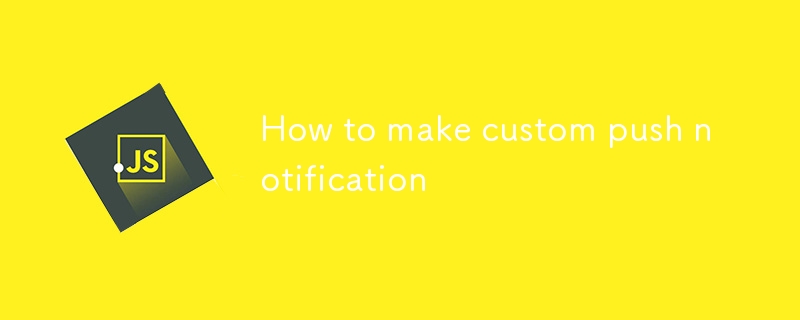

To build a custom push notification system as described, you'll need a variety of technologies, packages, and libraries. Here's a comprehensive list of the tech stack you'll use, divided into client-side, server-side, and general tools.
These are the technologies and libraries used in the user's browser.
HTML/CSS/JavaScript:
Service Worker:
Push API:
Notifications API:
Web VAPID Library (Optional):
These are the technologies and libraries that run on your server, managing subscriptions, sending notifications, and more.
Node.js:
Express.js:
Web-Push Library:
npm install web-push --save
Database:
Body-Parser Middleware:
npm install body-parser --save
npm install dotenv --save
Nginx or Apache:
SSL Certificate:
Git:
Node Package Manager (NPM) or Yarn:
Monitoring Tools:
Automated Deployment Tools:
Database Backup Solutions:
Code Editor:
Postman or Insomnia:
Your stack will primarily revolve aroundJavaScript,Node.js, andExpresson the backend, with a database likePostgreSQLorMySQLto store subscription data. TheWeb-Pushlibrary will handle the actual sending of push notifications, and theService WorkerandPush APIon the frontend will manage the subscription process and display of notifications.
This setup gives you complete control over the notification system, allowing for customization and optimization according to your needs.
The above is the detailed content of How to make custom push notification. For more information, please follow other related articles on the PHP Chinese website!
 What software is Twitter?
What software is Twitter? How to solve deletefile error code 5
How to solve deletefile error code 5 Cost-effectiveness analysis of learning python, java and c++
Cost-effectiveness analysis of learning python, java and c++ The difference between ms office and wps office
The difference between ms office and wps office How to implement h5 to slide up and load the next page on the web side
How to implement h5 to slide up and load the next page on the web side Reasons why css loading failed
Reasons why css loading failed mysql create database
mysql create database oracle nvl
oracle nvl



